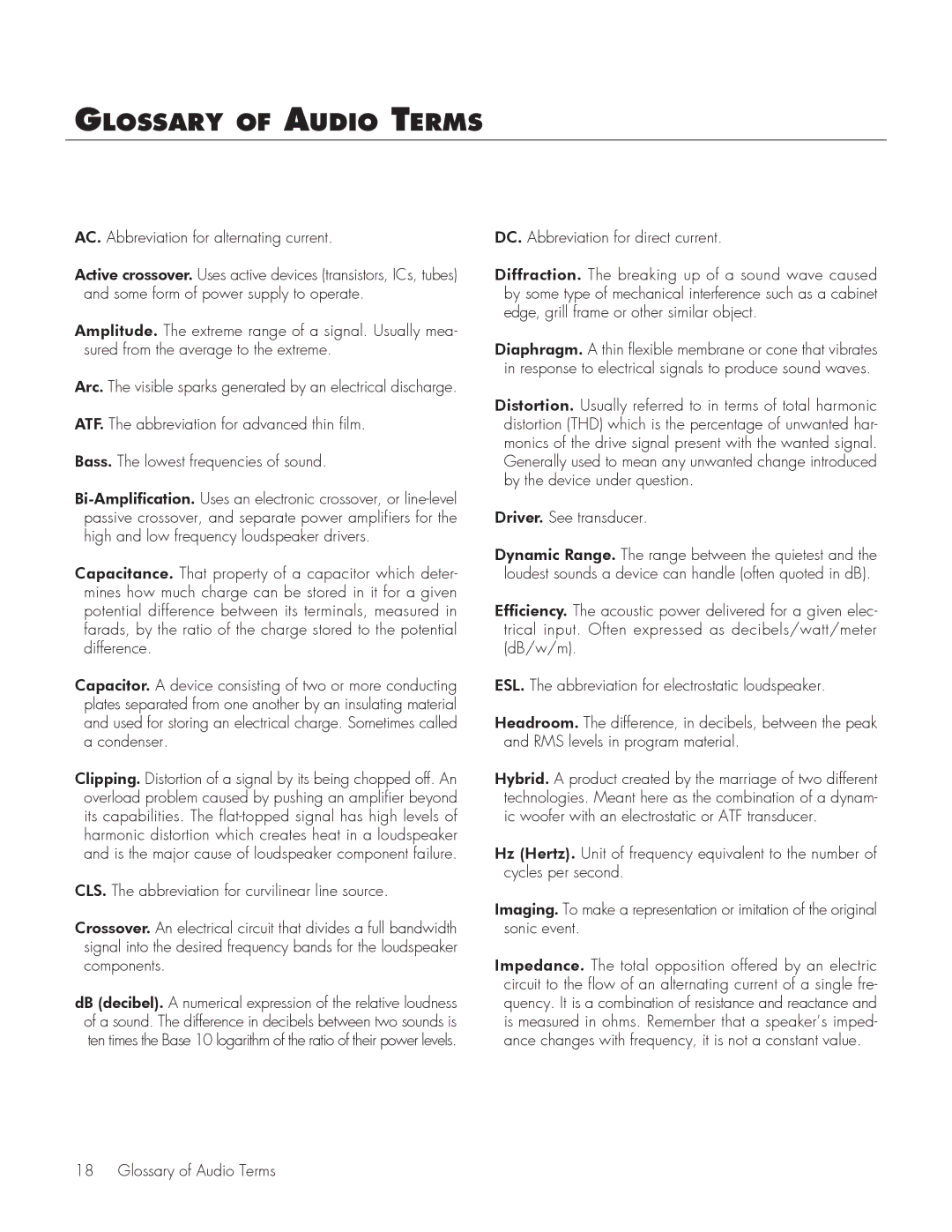1000 specifications
The MartinLogan 1000 is a remarkable achievement in the realm of high-end audio speakers, showcasing the perfect blend of cutting-edge technology and exquisite craftsmanship. At the core of the 1000's design is the innovative electrostatic transducer that provides an unparalleled listening experience. This technology allows for a rapid response and a wide frequency range, capturing subtle nuances in music that other speakers may miss.One of the standout features of the MartinLogan 1000 is its electrostatic panel, which uses a thin, flexible diaphragm placed between two electrically charged plates. This design ensures minimal distortion, resulting in sound reproduction that is more accurate and true to the original recording. The speaker's ability to create an expansive soundstage is another defining characteristic, allowing listeners to perceive depth and detail that is often lost in conventional dynamic speakers.
In addition to the electrostatic technology, the MartinLogan 1000 incorporates advanced imaging and dispersion techniques. The speakers are designed to deliver precise sound localization, allowing listeners to easily pinpoint individual instruments and vocals within a mix. This is particularly beneficial for audiophiles who seek an immersive listening experience akin to that of attending a live performance.
The cabinet of the MartinLogan 1000 is crafted with a strong emphasis on aesthetics and function. Constructed from high-quality materials, it boasts a sleek and modern appearance that fits seamlessly into any home environment. The use of premium wood veneers enhances its visual appeal while also contributing to the structural integrity of the speaker.
Connectivity is another strong suit of the MartinLogan 1000. The speaker is designed to integrate effortlessly with a variety of audio systems, featuring multiple input options to accommodate all types of setups. This versatility ensures that users can maximize their audio experience, whether they are listening to their favorite vinyl records or streaming high-resolution digital files.
Overall, the MartinLogan 1000 stands out as a premium choice for serious music enthusiasts. Its combination of electrostatic technology, precise imaging, and elegant design make it a top contender in the high-end speaker market. For those who demand exceptional audio fidelity and aesthetic beauty, the MartinLogan 1000 delivers, making it an investment worth considering for any serious home audio setup.
